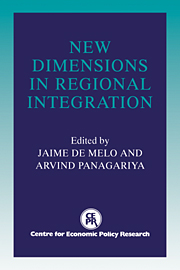Book contents
- Frontmatter
- Contents
- List of figures
- List of tables
- Preface
- Foreword
- Acknowledgements
- List of conference participants
- PART ONE SYSTEMIC ISSUES
- 1 Introduction
- 2 Regionalism and multilateralism: an overview
- Discussion
- 3 Regionalism versus multilateralism: analytical notes
- Discussion
- 4 Multilateral and bilateral trade policies in the world trading system: an historical perspective
- Discussion
- 5 GATT's influence on regional arrangements
- Discussion
- PART TWO COUNTRY ISSUES
- Index
4 - Multilateral and bilateral trade policies in the world trading system: an historical perspective
Published online by Cambridge University Press: 04 May 2010
- Frontmatter
- Contents
- List of figures
- List of tables
- Preface
- Foreword
- Acknowledgements
- List of conference participants
- PART ONE SYSTEMIC ISSUES
- 1 Introduction
- 2 Regionalism and multilateralism: an overview
- Discussion
- 3 Regionalism versus multilateralism: analytical notes
- Discussion
- 4 Multilateral and bilateral trade policies in the world trading system: an historical perspective
- Discussion
- 5 GATT's influence on regional arrangements
- Discussion
- PART TWO COUNTRY ISSUES
- Index
Summary
Introduction
Events of the past two decades have generated increasing concern about the direction of the world trading system. While the General Agreement on Tariffs and Trade (GATT) helped orchestrate the substantial reduction in tariffs after World War II, the multilateral approach to trade liberalisation has encountered difficulty in stemming the proliferation of non-tariff trade barriers and in extending international rules to new areas of trade. Meanwhile, the appearance of bilateral or regional trade arrangements in Europe, the Americas, and elsewhere provides an alternative track for expediting trade reform, but also risks deteriorating into exclusionary, trade-diverting blocs that possibly may bring harm to world welfare.
The loss of momentum in the multilateral system and the movement toward bilateral agreements have sparked renewed debate over the relative merits of the two approaches to trade liberalisation. This chapter aims to provide some historical insight into this debate by examining whether multilateral or bilateral trade policies have been more effective in promoting trade reforms in the past. How has trade liberalisation been achieved in the past, and which types of policies have proved constructive or detrimental to multilateral cooperation on trade policy? Throughout the chapter the focus will be almost exclusively on trade policies in Europe, not only because Europe accounted for the bulk of international trade during these periods but because trade policies set much of the agenda for the rest of the world.
- Type
- Chapter
- Information
- New Dimensions in Regional Integration , pp. 90 - 119Publisher: Cambridge University PressPrint publication year: 1993
- 42
- Cited by



